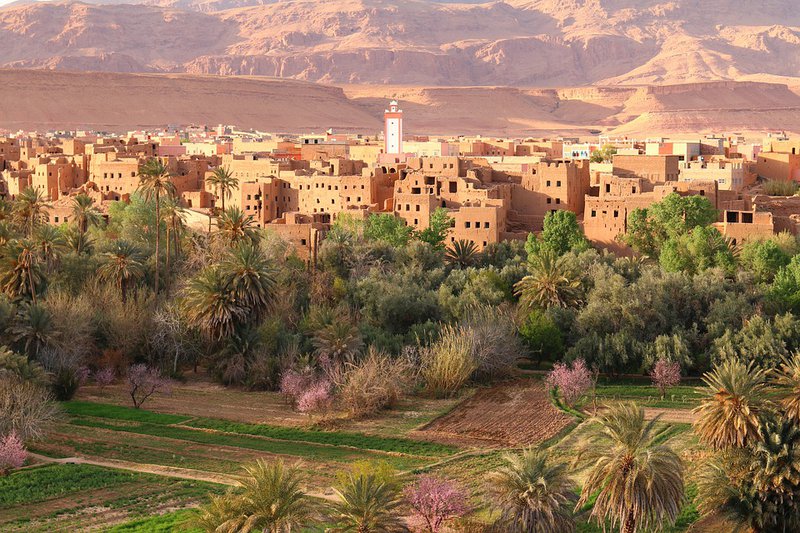Land Use and Land Cover (LULC) is an important component in many applications, scientific studies and assessments, as it provides fundamental information for understanding the relationship between humans and natural systems. Accurate and updated LULC information is essential at different spatial scales. It helps monitoring agriculture and land development and supports decision making on issues regarding rural development, food security and environmental sustainability.

Land Use Land Cover at Coarse Spatial Resolution
Map of Dominant LULC at a spatial resolution of 1km for the year 2013. The product is a federation of the FAO GLobal Land Cover-Share (GLC-SHARE) product. The GLC-SHARE product is the result of the fusion of best available high resolution national, regional and/or sub-national land cover databases, that date from 1998 to 2012 for the African Continent.
Land Use Land Cover at Medium Spatial Resolution
Map of LULC at a spatial resolution of 500m. The product is a federation of the MODIS MCD12Q1 V6 Land Cover product. The MCD12Q1 V6 product is derived using supervised classifications of MODIS Terra and Aqua reflectance data and provides global land cover types on a yearly basis. This product is provided starting from year 2017 with a classification scheme from the University of Maryland (UMD) for the legend and class definitions.
- Land Use & Land Cover, 500x500 m, Ethiopia
- Land Use & Land Cover, 500x500 m, Ghana
- Land Use & Land Cover, 500x500 m, Kenya
- Land Use & Land Cover, 500x500 m, Mozambique
- Land Use & Land Cover, 500x500 m, Niger
- Land Use & Land Cover, 500x500 m, Rwanda
- Land Use & Land Cover, 500x500 m, South Africa
- Land Use & Land Cover, 500x500 m, Tunisia
Land Use & Land Cover, 100x100 m
The service at medium resolution is based on LC maps provided by different institutions or projects (Copernicus, FAO, USGS, etc.). LC map are reorganized to make them more readable from final users. The file contains two bands. Band 1 provides the fraction (in percentage) of the pixel covered by the class given in Band 2. Band 2 contains the class that covers the largest fraction of the pixel. The classes are 10, the class forest is distinguished in 12 sub-classes.
- Land Use & Land Cover, 100x100 m, Ethiopia
- Land Use & Land Cover, 100x100 m, Ghana
- Land Use & Land Cover, 100x100 m, Kenya
- Land Use & Land Cover, 100x100 m, Mozambique
- Land Use & Land Cover, 100x100 m, Niger
- Land Use & Land Cover, 100x100 m, Rwanda
- Land Use & Land Cover, 100x100 m, South Africa
- Land Use & Land Cover, 100x100 m, Tunisia
Land Use & Land Cover, 20x20 m
The service at high resolution is based on Sentinel-2 LC maps provided by ESA. LC map is re-organized to make it more readable from final users. The pixels are classified in 10 classes (from 1 to 10) and each pixel represents the land cover types.
- Land Use & Land Cover, 20x20 m, Ethiopia
- Land Use & Land Cover, 20x20 m, Ghana
- Land Use & Land Cover, 20x20 m, Kenya
- Land Use & Land Cover, 20x20 m, Mozambique
- Land Use & Land Cover, 20x20 m, Niger
- Land Use & Land Cover, 20x20 m, Rwanda
- Land Use & Land Cover, 20x20 m, South Africa
- Land Use & Land Cover, 20x20 m, Tunisia
Land Use Change, 100x100 m
This service is based on Land Change maps at different spatial resolution provided every year from different institutions or projects (Copernicus, FAO, USGS, etc.).
Land Cover Change Assessment (LCCA) provides a map of the pixels interested by a change from a initial year and a final year and gives, for each changed pixel, a value from which it is possible to retrieve the actual and the previous class of that pixel. In particular, the file contains two bands. Band 1 provides a value computed according to the formula: pix_val(i,j) = LC_last(i,j)*10+LC_ref(i,j). Band 2 provides the the values 0 - 1 (no-change / change). Land cover types are grouped in 7 classes: Grass (1), Crop (2), Forest (3), Shrub (4), Bare (5), Built areas (6), Water (7)
- Land Use Change, 100x100 m, Ethiopia
- Land Use Change, 100x100 m, Ghana
- Land Use Change, 100x100 m, Kenya
- Land Use Change, 100x100 m, Mozambique
- Land Use Change, 100x100 m, Niger
- Land Use Change, 100x100 m, Rwanda
- Land Use Change, 100x100 m, South Africa
- Land Use Change, 100x100 m, Tunisia
